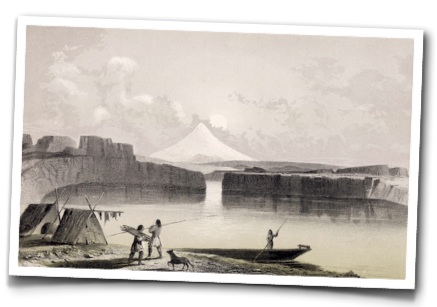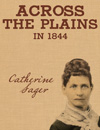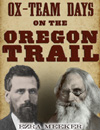The Dalles

ABOVE: The Dalles. Looking south, note Mt. Hood in the background.
At The Dalles, the Columbia River rumbled through a narrow chasm. It was here that Jason Lee set up a Methodist mission in 1838. History does not tell us how many were converted at Lee's tiny outpost, but The Dalles did become a critical stop for the emigrants. That's because it was here that the trail ruts came to a complete stop--blocked by the Cascade Mountains. Unfortunately, the Willamette Valley--the emigrant's destination--was still 100 miles further on. In the Trail’s first years, there was only one solution--float the wagons down the Columbia River.
Emigrant Parthenia Blank:
"The appearance of the river here changes--and from being a rapid, shallow and narrow stream, it becomes a wide, deep and still one, in some places more than a mile wide and too deep to be sounded.The banks are precipitous and rocky, and several hundred feet high in some places. Passed down to an immense pile of loose rocks across the stream, over which the water runs with great rapidity for six miles."
Because of the swirling rapids, the trip down the Columbia was especially treacherous.
Emigrant Lindsey Applegate:
"One of our boats, containing six persons, was caught in one of those terrible whirlpools and upset. My son, ten-years-old, my brother Jesse's son Edward, same age, were lost. It was a painful scene beyond description. We dared not go to their assistance without exposing the occupants of the other boat to certain destruction. The bodies of the drowned were never recovered."
Many emigrants soon realized they could not navigate the hazardous river themselves, so they hired experts--Native Americans.
Emigrant Overton Johnson:
"It requires the most dexterous management, which these wild navigators are masters of, to pass the dreadful chasm in safety. A single stroke amiss, would be inevitable destruction."
Even with Native American help, floating the Columbia was risky. Commercial ferrymen also set up shop, but their prices were outlandishly high. Even if an emigrant was willing to pay the steep fee, there were not enough ferry boats available to handle the flood of wagons rolling in. So here at The Dalles they waited for days--or weeks. As a result, a city was born.




